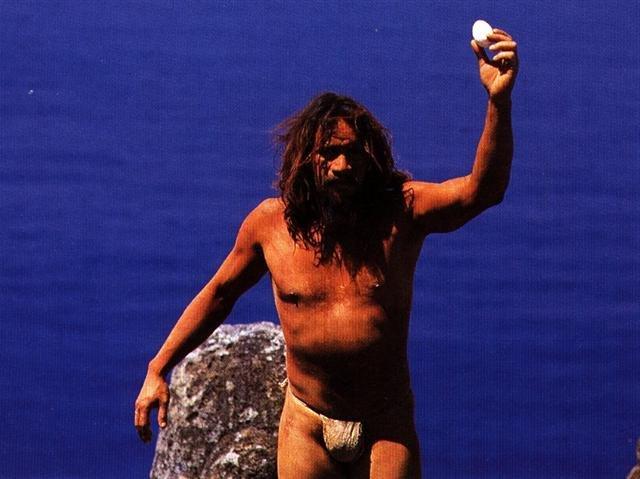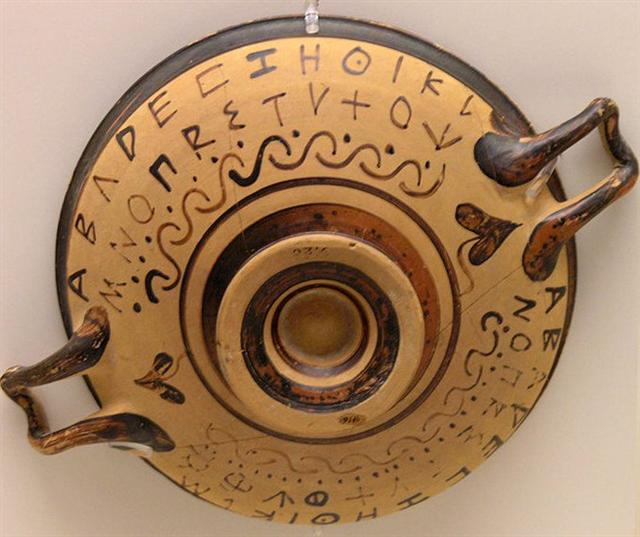3. At π Virginis is the 'door' to next half of the year (counted from March 21):
Close by and already in the next day, in September 20, is ο Virginis rising as a symbol for the new year, and illustrated as a bird-egg in Ga5-8. Spring has arrived to Easter Island:
We do not have to repeat what happens next - primarily autumn equinox north of the equator, Crux, Musca Australis, Raven, and Vero followed by Mimosa. Instead, let's move on. Vindemiatrix is in October 5, exactly at the 13h border line (once again a quite convincing Sign of the beautiful order in cosmos):
Where should we begin our investigation of this new 'year'? I suggest at Heze (ζ Virginis) because that is where the legs of Virgo are spreading out.
It is also at the beginning of a glyph line and the first glyph beyond Ga5-30 (where we once again cannot avoid noticing 53). Allen has nothing to say in the matter, except when commenting on Zaniah (η Virginis at September 24): "It [Zaniah] lies on the left side of the Virgin, and just to the westward is the point of the autumnal equinox which the Chinese knew as Yih Mun, Twan Mun, or Tien Mun, Heaven's Gate. With ζ [Heze] it almost exactly marks the line of the celestial equator." The Long Sand-bank (Chang Sha, ζ Corvi) could perhaps allude to the stretch between Zaniah and Heze, half a month:
The honu glyphs are beginning at Zaniah and Chang Sha, and possibly is Rogo in Ga5-10 exhibiting a sandbank in front. The implication could be the 'earth turtle' is about to lay her eggs, as if this was a kind of 'Bay of Turtles'. Once upon a time Virgo must have been at 8h, where at present there is a Heap of Fuel (μ Cancri) and where today the π date is July 22. Counting days and precession: 265 (autumn equinox) - 203 (July 22) = 62 days, and 72 * 62 is ca 4500 years ago. It was Julius Caesar who changed September from the 7th (septem) to the 9th month, thereby, presumably, also changing the great π date September 22 to July 22. The Chinese Heaven's Gate, at autumn equinox north of the equator, could earlier have been associated with some other star than Zaniah, a star which nowadays has a higher right ascension. Or the Gate could earlier have stood at summer solstice. We remember the star Heavenly Gate (ζ Tauri): ... ζ, 3.5, was the determinant of the 7th ecliptic constellation of Babylonia, Shur-narkabti-sha-shūtū, the Star in the Bull towards the South, or the Southern Star towards the Chariot. Reeves gave it, with others near by, as Tien Kwan, the Heavenly Gate. In astrology ζ has been considered of mischievous influence ... Heavenly Gate is today rising heliacally 6 days before June 21:
This is was Ian Ridpath has to say of the Virgo gate in heaven: "Spica and Zeta Virginis formed Jiao, the horn of the Blue Dragon cang long. Jiao, ‘horn’, was also the first of the 28 Chinese lunar mansions. Since the ecliptic passed between the two stars of Jiao the pair were seen as a gateway for the Sun, Moon and planets (there are many such gateways in the Chinese sky). Confusingly, two stars to the south of Spica, 53 and 69 Virginis, were also described as a gate, Tianmen, even though they were aligned nearly parallel to the ecliptic and so the Sun could not pass between them." To which ought to be added that the ecliptic is not fixed but moves like the right ascension values of the stars due to the precession. But the downward slope of the ecliptic is moving towards the right in the star chart above, towards lower right ascension. The gate between 53 and 69 Virginis is therefore hardly of the same character as that between Heze and Spica. Heze (ζ Virginis) is rising 24 days after π Virginis and 354 days before ζ Leporis. The ζ letter could be a technical Sign to consider (also used at Heavenly Gate and at Chang Sha):
As earlier noted 472 - 365 = 106 creates a difference between the flow of glyphs on one hand and the flow of days on the other. There are 248 days from October 13 to the similar (but reversed and 'dead') glyph at June 18. 248 + 106 = 354 (= 12 * 29˝). Heze is rising heliacally 290 days before ζ Leporis. 354 - 290 = 64. There is a difference also between the flow of glyphs and the flow of star positions. 290 - 248 = 42 (= 106 - 64).
"Zeta (uppercase Ζ, lowercase ζ; Greek: ζήτα ... is the sixth letter of the Greek alphabet. In the system of Greek numerals, it has a value of 7. It was derived from the Phoenician letter Zayin [see letter number 7 on the bowl above]. Letters that arose from zeta include the Roman Z and Cyrillic З ... Zayin (also spelled Zain or Zayn or simply Zay) is the seventh letter of many Semitic abjads ... It represents the sound [z]. The Phoenician letter appears to be named after a sword or other weapon. (In Biblical Hebrew, 'Zayin' means sword, and the verb 'Lezayen' means to arm. In modern Hebrew, 'zayin' means penis and 'lezayen' is a vulgar term which generally means to perform sexual intercourse and is used in a similar fashion to the English word fuck, although the older meaning survives in 'maavak mezuyan' (armed struggle) and 'beton mezuyan' (armed, i.e., reinforced concrete). The Proto-Sinaitic glyph according to Brian Colless may have been called ziqq, based on a hieroglyph depicting a 'manacle'." (Wikipedia) The 'Burden of Maui' (Ha'amonga-'a-Maui, the trilithon on Tongatapu) could refer to how Maui (Sun) has to 'die' in order to give room for the next generation, for rebirth: ... And now, they learned, it was Maui's idea to enter her very body. He proposed to pass through the womb of Great Hine the Night, and come out by her mouth. If he succeeded, death would no longer have the last word with regard to man; or so his mother had told him long ago. This, then, was to be the greatest of all his exploits. Maui, who once had travelled eastward to the very edge of the pit where the sun rose, and southward over the great Ocean of Kiwa to where he fished up land, and all the way to the dwelling-place of Mahuika - Maui now proposed a journey to defy great Hine in the west. Taking his enchanted weapon, the sacred jawbone of Muri ranga whenua, he twisted its strings around his waist. Then he went into the house and threw off his clothes, and the skin on his hips and thighs was as handsome as the skin of a mackerel, with the tattoed scrolls that had been carved there with the chisel of Uetonga. And off they went, with the birds twittering in their excitement. When they arrived at the place where Hine nui lay asleep with her legs apart and they could see those flints that were set between her thighs, Maui said to his companions: 'Now, my little friends, when you see me crawl into the body of this old chieftainess, whatever you do, do not laugh. When I have passed right through her and am coming out of her mouth, then you can laugh if you want to. But not until then, whatever you do.' His friends twittered and fluttered about him and flew in his way. 'O sir', they cried, 'you will be killed if you go in there.' 'No', said Maui, holding up his enchanted jawbone. 'I shall not - unless you spoil it. She is asleep now. If you start laughing as soon as I cross the threshold, you will wake her up, and she will certainly kill me at once. But if you can keep quiet until I am on the point of coming out, I shall live and Hine nui will die, and men will live thereafter for as long as they wish.' So his friends moved out of his way. 'Go on in then, brave Maui', they said, 'but do take care of yourself'. Maui at first assumed the form of a kiore, or rat, to enter the body of Hine. But tataeko, the little whitehead, said he would never succeed in that form. So he took the form of a toke, or earth-worm. But tiwaiwaka the fantail, who did not like worms, was against this. So Maui turned himself into a moko huruhuru, a kind of caterpillar that glistens. It was agreed that this looked best, and so Maui started forth, with comical movements. The little birds now did their best to comply with Maui's wish. They sat as still as they could, and held their beaks shut tight, and tried not to laugh. But it was impossible. It was the way Maui went in that gave them the giggles, and in a moment little tiwaiwaka the fantail could no longer contain himself. He laughed out loud, with his merry, cheeky note, and danced about with delight, his tail flickering and his beak snapping. Hine nui awoke with a start. She realised what was happening, and in a moment it was all over with Maui. By the way of rebirth he met his end ... |


















